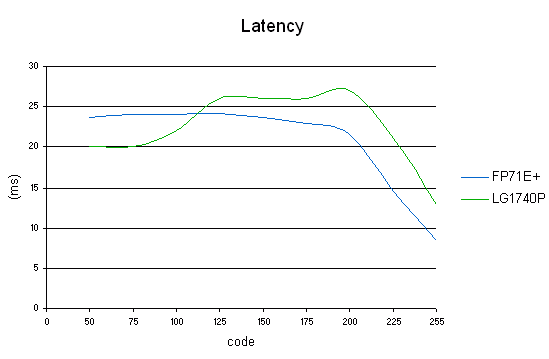Great Design: 2 New 17" LCDs from LG
Spatial Uniformity
We measured the uniformity of the panel's lighting. For those of you who aren't used to the Tom's Hardware tests, we'll recall the method we use:
We set the panel at 50% brightness and 50% contrast and measure the uniformity of the lighting on a white image separated into 64 areas of equal size. The brightest point is considered to be 100%, and the previously measured black value is considered 0%, with the other values obtained distributed between them.
The panel has very good uniformity; all the values are in a range of 15% of the total range. That's close to what we'd measured with the Hyundai L90D+, which performed especially well in this area.
So the static qualities of the L1740P are good. Now let's see what this artist can do with moving images.
Looks Familiar
We measured the actual latency of the panel:
Again we'll recall our test method:
The curve shows the latency values for different levels of gray. A black-white alternation is shown on the curve by a point at X-axis 255, a black-light-gray alternation produces a point at X-axis 125, a black-dark-gray alternation shows as 50, etc.
Get Tom's Hardware's best news and in-depth reviews, straight to your inbox.
The official ISO latency rating specified by the manufacturer is only for black/white transitions (0/255). While the value we measured agrees with the manufacturer on this point, it's not of much value in judging the actual responsiveness of the panel in practice.
The 12 ms 17" LG/Philips panels have never been speed demons, and that trend was confirmed again here. So it looks as if the progress made by the consortium in the speed of 19" panels hasn't really spilled over to the smaller models. As can be seen, the responsiveness was far from matching that of our reference 17" panel, a BenQ FP71E+ 8ms AU Optronics. However, let's talk in practical terms. The panel remains usable for games, and in fact did better than our 19" reference panel, the L90D+... but with two inches less!

